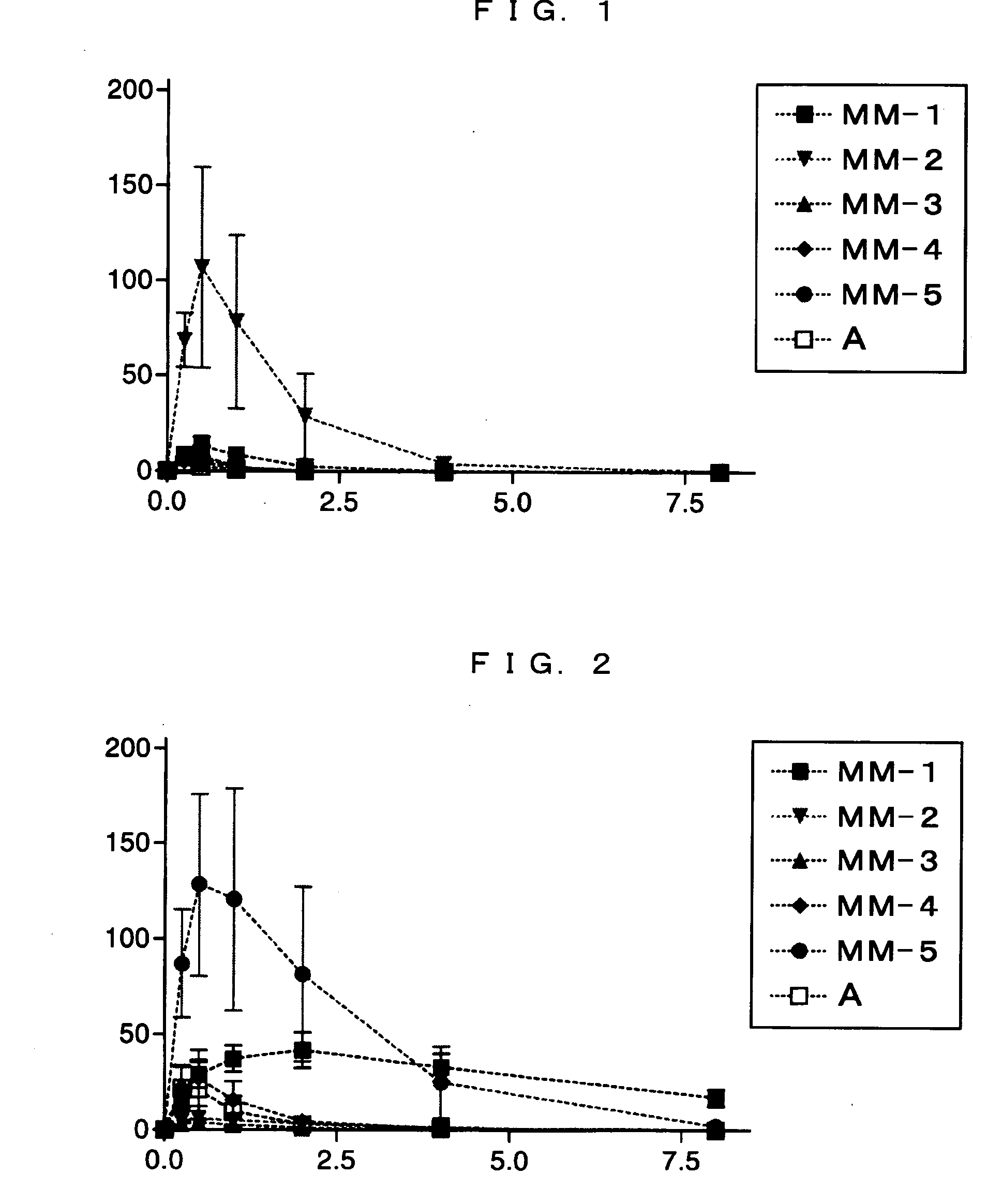Canine cyp1a2 genetic polymorphism
a genetic polymorphism and canine technology, applied in the field of canine cyp1a2 genetic polymorphism, to achieve the effect of convenient detection of snp, remarkable individual differences, and accurate evaluation
- Summary
- Abstract
- Description
- Claims
- Application Information
AI Technical Summary
Benefits of technology
Problems solved by technology
Method used
Image
Examples
example 1
Determination of SNPs in Beagle CYP1A2 Gene
[0099] In this example, total RNA isolated from a beagle liver was used as a template, a partial nucleotide sequence of beagle CYP1A2 cDNA was determined by a RT-PCR (Reverse transcription-polymerase chain reaction) method, and SNPs in a beagle CYP1A2 gene were determined, in accordance with the following procedures.
[0100] A beagle A (type EM) and a beagle B (type PM), previously classified by a preliminary test (see Example 7), were anesthetized and sacrificed by intravenously administering 50 mg / mL / kg of pentobarbital (two subjects in total), and the liver of each was dissected and immediately frozen. An RNeasy Mini kit (QIAGEN) was used to obtain each total RNA from the frozen livers in accordance with a protocol attached to the kit.
[0101] From the obtained total RNA, 500 ng of total RNA was used as a template to synthesis cDNA from RNA by a reverse transcriptase. The reaction was carried out using an RNA LA PCR kit Ver.1.1. (Takara S...
example 2
Assay for Identifying Nucleotide Sequence at the 5′ Terminal Region of Beagle CYP1A2 Gene by a 5′ RACE Method
[0107] In this example, total RNA isolated from a beagle liver was used as a template, an unidentified nucleotide sequence at the 5′ terminal region of beagle CYP1A2 gene was determined by a 5′ RACE (5′ rapid amplification of cDNA ends) method, and the full-length (from the start codon, methionine to the stop codon) of nucleotide sequence of beagle CYP1A2 cDNA was identified.
[0108] Approximately 0.1 g of the liver tissue dissected from the EM-type beagle A in Example 1 was used to extract total RNA by an Invitrogen TRIzol Reagent (Invitrogen) in accordance with a protocol attached thereto.
[0109] Approximately 0.1 g of the beagle liver tissue frozen immediately after the dissection was crushed into powder in a mortar, and suspended in 1 mL of Invitrogen TRIzol Reagent (Invitrogen). To the suspension, 0.2 mL of chloroform was added, and the mixture was shaken and centrifuged...
example 3
SNP in Which a Base at Position 87 of Exon 4 in CYP1A2 Gene is Substituted from C to T
[0117] To easily detect the SNP in which a base at position 1117 of a beagle CYP1A2 gene is substituted from C to T, a position of the SNP in genomic DNA was examined.
[0118] In this example, genome information in an other mammalian CYP1 family was used to predict the position of the SNP of interest, genomic DNA was isolated from beagle leukocytes, PCR was carried out, and nucleotide sequences of genomic DNA including the SNP were determined.
[0119] When exons and introns of human CYP1A1 (NCBI accession No. AF253322), human CYP1A2 (NCBI accession No. AF253322), mouse CYP1A1 (NCBI accession No. X01681), mouse CYP1A2 (NCBI accession No. X01682), rat CYP1A2 (NCBI accession No. K02246), and rat CYP1A2 (NCBI accession No. K03241) were prepared, the size of each intron was different among molecules, but the size of each exon was conserved among different species. More particularly, the sizes of exons 1,...
PUM
| Property | Measurement | Unit |
|---|---|---|
| volume | aaaaa | aaaaa |
| chemical structure | aaaaa | aaaaa |
| polar functional | aaaaa | aaaaa |
Abstract
Description
Claims
Application Information
 Login to View More
Login to View More - R&D
- Intellectual Property
- Life Sciences
- Materials
- Tech Scout
- Unparalleled Data Quality
- Higher Quality Content
- 60% Fewer Hallucinations
Browse by: Latest US Patents, China's latest patents, Technical Efficacy Thesaurus, Application Domain, Technology Topic, Popular Technical Reports.
© 2025 PatSnap. All rights reserved.Legal|Privacy policy|Modern Slavery Act Transparency Statement|Sitemap|About US| Contact US: help@patsnap.com

